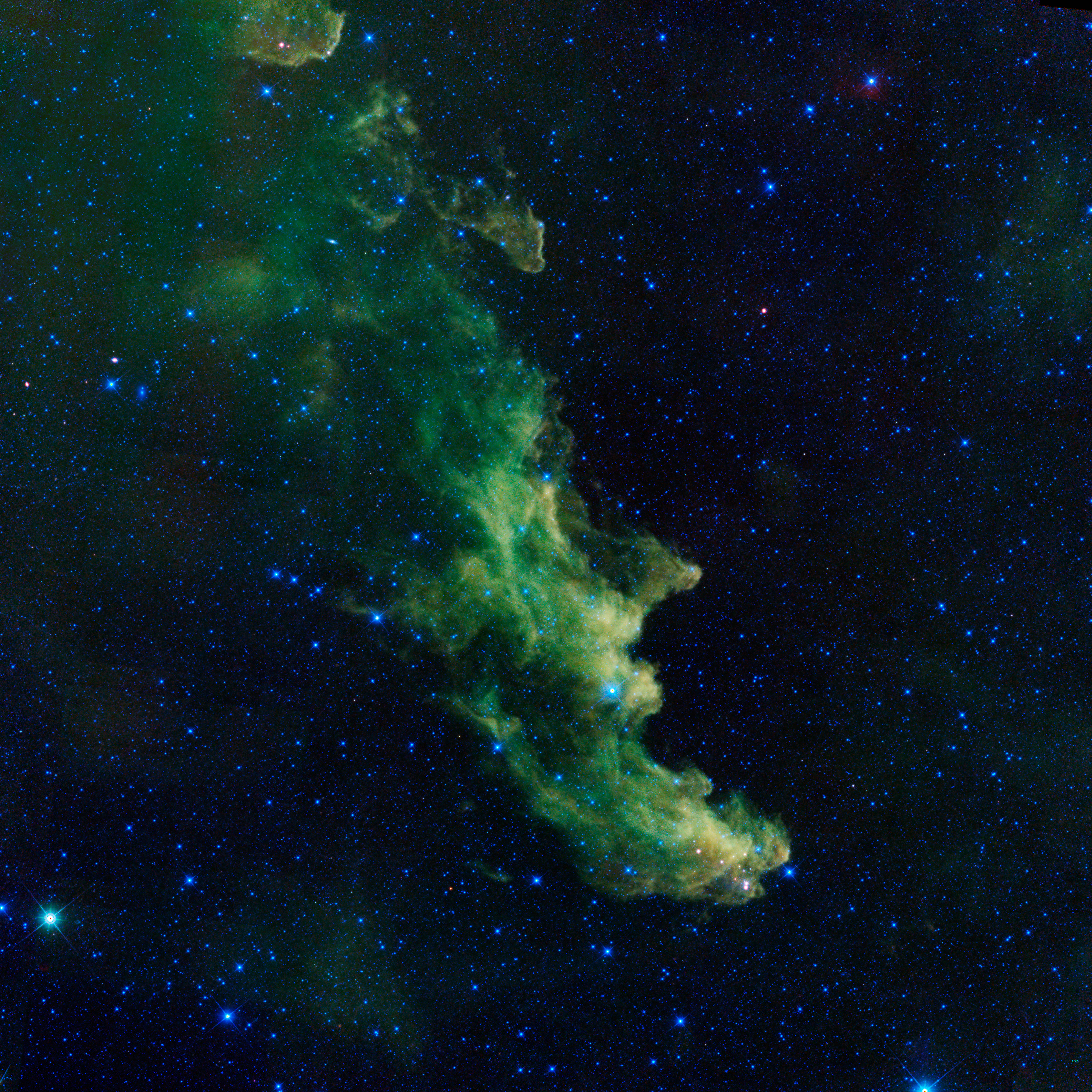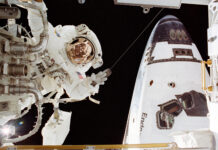NASA’s WISE Captures the Enchanting Witch Hat Nebula
In a mesmerizing display of cosmic artistry, a 2013 image taken by NASA’s Wide-Field Infrared Survey Explorer (WISE) showcases a nebula that strikingly resembles a witch in the act of casting a spell. This celestial formation, appropriately named the Witch Hat Nebula, is not just a visual delight but also a stellar nursery. The nebula’s distinctive appearance is illuminated by the light of massive stars, which interact with the dust particles present in the nebula, causing them to emit a glow in the infrared spectrum. This glow was captured meticulously by WISE’s advanced detectors, providing us with a glimpse into the beauty and complexity of our universe.
The Journey of WISE: From Launch to Hibernation
WISE embarked on its journey to explore the cosmos on December 14, 2009, after being launched into a near-Earth orbit. Its mission was to conduct a comprehensive survey of the sky across four different infrared wavelength bands. Infrared light is not visible to the naked eye but can reveal objects and features in space that are otherwise hidden. The telescope’s ability to detect this light was enabled by a cooling system using frozen hydrogen. Unfortunately, by September 2010, this cooling substance was exhausted, marking the end of WISE’s primary mission dedicated to astrophysics. Subsequently, in February 2011, the spacecraft entered a state of hibernation.
NEOWISE: A New Mission Unfolds
WISE’s story did not conclude with its initial mission. In late 2013, the spacecraft was given a new lease on life, courtesy of NASA’s Planetary Science Division. It was rebranded as NEOWISE and tasked with a vital new mission: to assist in identifying and characterizing near-Earth objects (NEOs). NEOs, which include comets and asteroids, are celestial bodies that have been nudged by gravitational forces into orbits that bring them close to Earth. These objects, while fascinating, can pose potential threats due to their proximity to our planet.
NEOWISE played a crucial role in enhancing our understanding of these objects, contributing significantly to planetary defense efforts. It provided data that helped scientists determine the size, composition, and trajectory of NEOs, thereby aiding in the assessment of any potential impact risks.
From Star Nursery to Asteroid Hunter: The Legacy of NEOWISE
Over the years, NEOWISE made substantial contributions to both astrophysics and planetary science. The transition from mapping the universe’s infrared glow to hunting asteroids exemplifies the versatility and adaptability of space missions. Despite facing challenges such as the depletion of its cooling materials and eventual decommissioning, NEOWISE’s legacy endures through the wealth of data it has provided to scientists around the world.
On August 8, 2024, NEOWISE was officially decommissioned and entered hibernation for the final time. This marked the end of its active career as an asteroid hunter, closing a remarkable chapter in space exploration history. The data collected by NEOWISE continues to influence research, ensuring that its contributions will be felt for many years to come.
Understanding Infrared Astronomy
For those unfamiliar with the field, infrared astronomy is a branch of astronomy that studies celestial objects by detecting the infrared radiation they emit. Unlike visible light, infrared light can penetrate dust clouds in space, providing insights into regions such as star nurseries that would otherwise be obscured. WISE’s ability to capture infrared images has allowed scientists to study the formation and evolution of stars and galaxies in unprecedented detail.
Good to Know: The Importance of Monitoring NEOs
The study of near-Earth objects is crucial for several reasons. Primarily, it helps scientists understand the origins and evolution of our solar system. NEOs are remnants from its formation, offering clues about the materials and processes that shaped our cosmic neighborhood. Moreover, by monitoring these objects, we are better equipped to predict potential impacts, allowing for the development of strategies to mitigate possible threats to Earth.
Community Reactions and Scientific Impact
The scientific community and space enthusiasts alike have lauded the achievements of WISE and NEOWISE. The data provided by these missions have been instrumental in various studies and have paved the way for future missions targeting similar objectives. Many researchers and institutions continue to analyze the data collected by NEOWISE, contributing to ongoing discoveries and insights.
Conclusion: A Legacy of Exploration
The story of WISE and its transformation into NEOWISE is a testament to human ingenuity and curiosity. From capturing the ethereal beauty of the Witch Hat Nebula to safeguarding our planet from potential celestial threats, these missions have expanded our understanding of the universe. While NEOWISE may have entered hibernation, its impact on space science continues to resonate, inspiring future generations to look up and seek answers among the stars.
For more Information, Refer to this article.



































